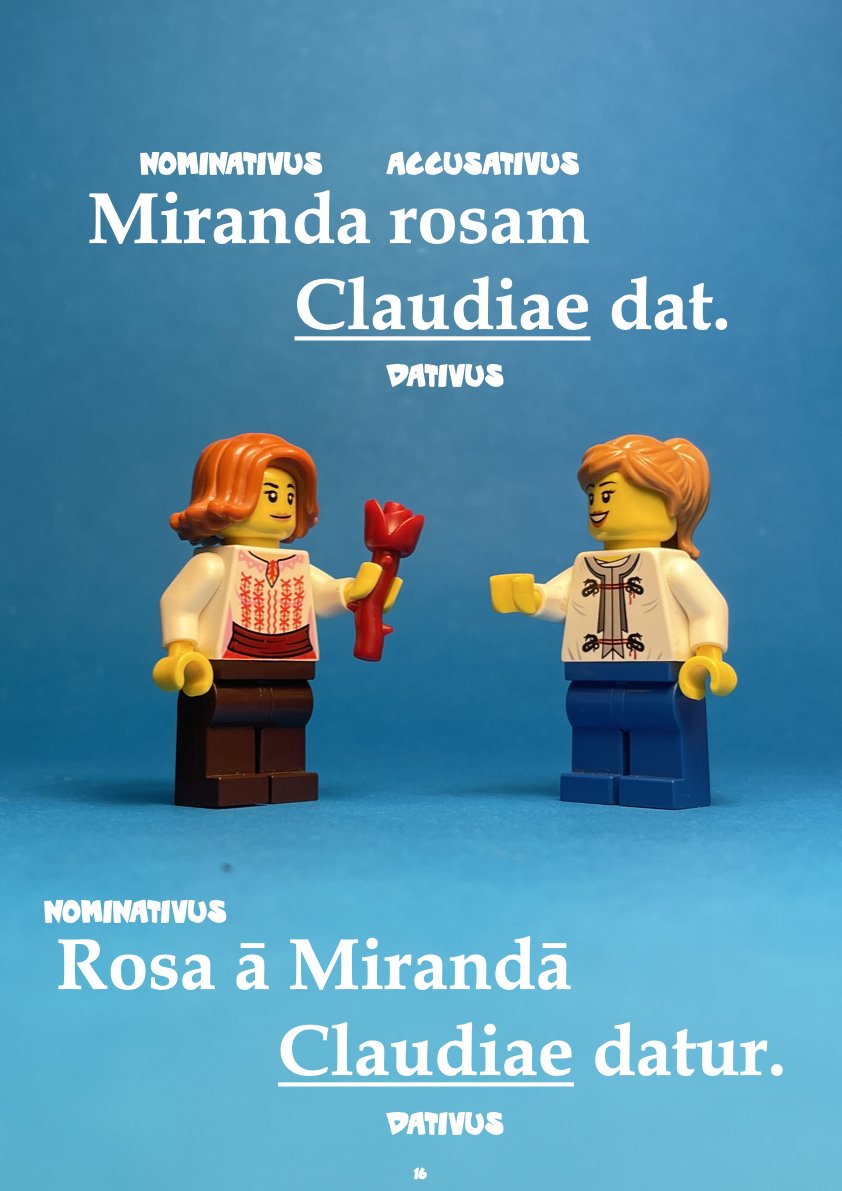Savlēte, sodālēs.
Today’s lesson introduces a new case. The datīvus is sometimes referred to as the ‘to/for’ case, for reasons that will become clear over time. For now, know that the datīvus is named after a new verb, dat/dant gives/give.
In the example below, Miranda is giving a rose to Claudia. Miranda is the subject and so nōminātīvus. Rosam is the object and so accūsātīvus. She is giving the rose to Claudia, and so Claudiae is datīvus. You have probably noticed that the datīvus has an ending that you’ve seen elsewhere. We have to rely on context to tell us that Claudiae is, in fact, datīvus.
If we express the same idea with a passive verb - A rose is being given to Claudia by Miranda. - rosa now becomes the nōminātīvus subject and the prepositional phrase ā Mirandā tells us that Miranda is the agent (see Lesson Seventy). The rose is still being given to Claudia, so Claudiae remains datīvus.
Just be mindful that Miranda giving a rose to Claudia is quite different from Miranda walking to/towards Claudia and so only one uses the datīvus and the other a prepositional phrase.
Miranda rosam Claudiae dat.
Miranda ad Claudiam ambulat.
So now you know that -ae is the datīvus ending for nouns like Claudia that end in -a. In today’s reading you will meet the datīvus ending of words that end in -us, like Mārcus, fīlius suus and Quīntus. As you are reading, try to deduce that ending.
You will also meet eī, which can mean to him, to her or to it depending on context. In today’s reading eī refers to Quintus.
Now READ Capitulum Septimum, lines 45-50.
-
to Marcus : Mārcō
to his son : fīliō suō
to Quīntus : Quīntō
Satis est. Please free free to post any questions in the comments. We will remain focused on the datīvus in our next lesson. See you then.

